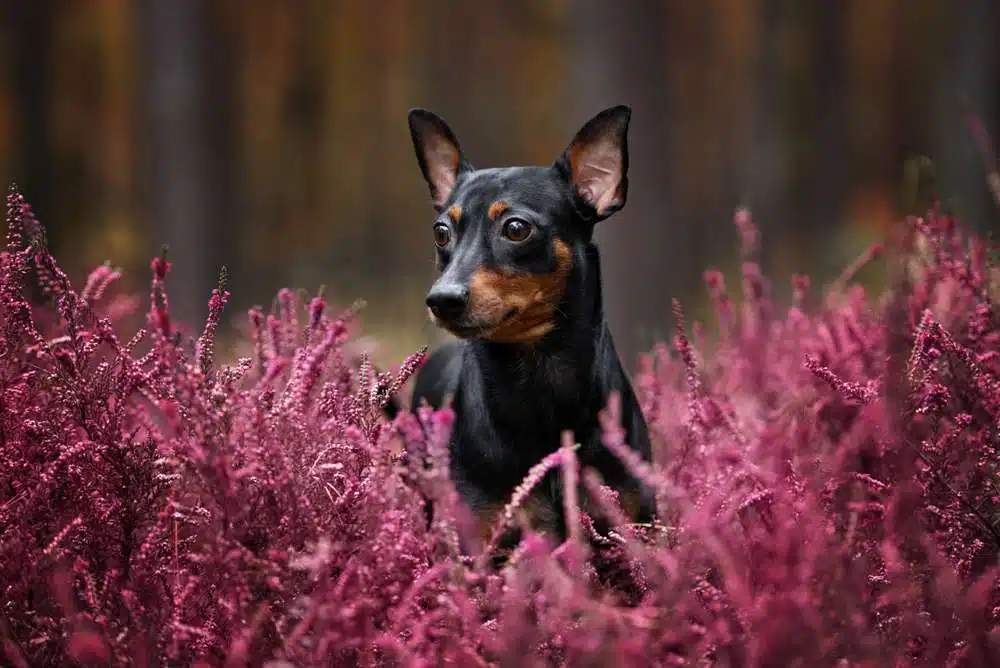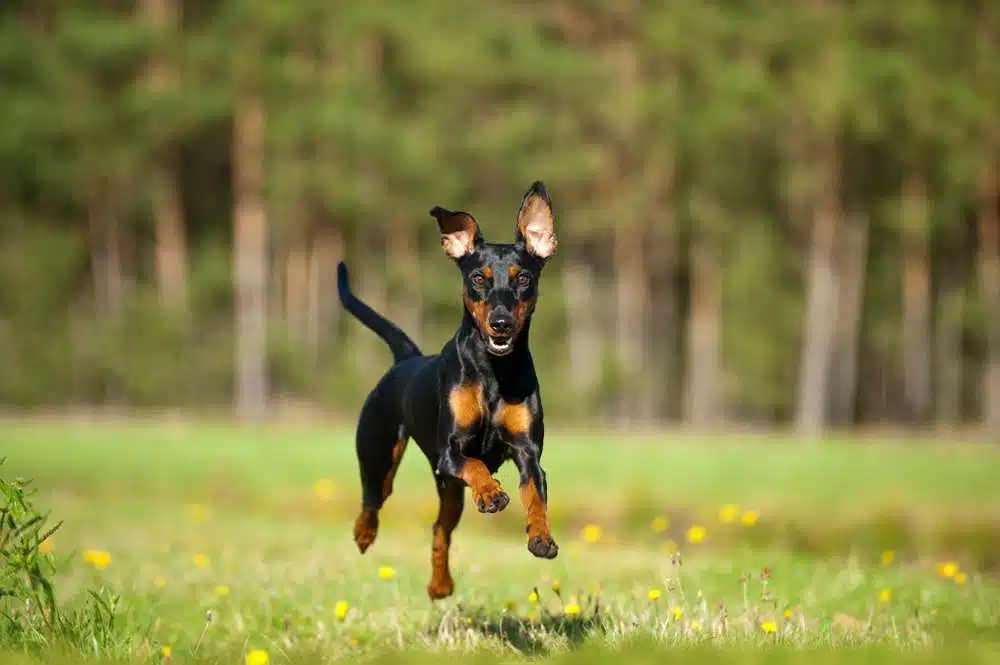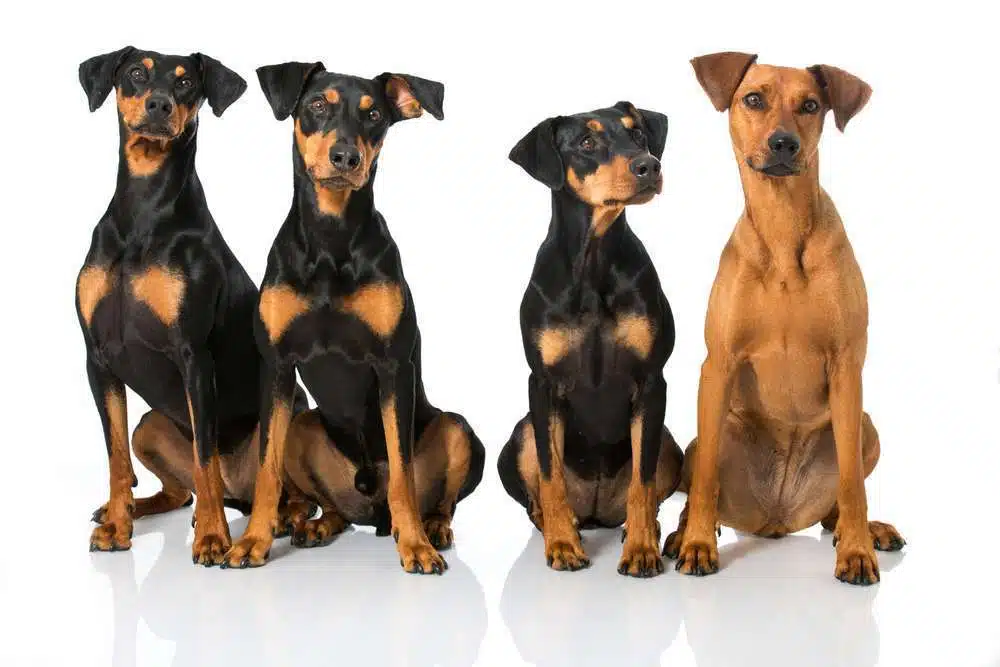German Pinscher

Founded in Germany, the German Pinscher is a rare breed that was bred as an adept vermin exterminator and has served as the precursor to many sought-after canines such as Dobermans, Schnauzers, and Miniature Pinschers. These intelligent creatures are full of mischief but with proper training they can reach their peak potential. By dedicating time to give them attention and instruction on how to behave properly you will be rewarded with this amazing breed’s loyalty for life!
The first German Pinscher appeared in art as early as 1780, and it resembles the breed we know today. Scholars suggest that this particular type of dog descended from guard dogs and herding dogs commonly used to protect grain stores from rats and mice. When breeding the early Pinschers, both smooth- and rough-coated puppies could occur in one litter. These two coat types were purposely bred apart. The result of this selective process is what we see today – a sleek coated German Pinscher and shaggy Schnauzer!
The German Pinscher boasts a luxurious and lustrous coat that is short and thick without any bald patches. With an array of colors ranging from various shades of red to stag red, where black hairs are interspersed with the predominant hue, as well as Isabella – a soft bay or fawn shade – this breed can also come in classic black or blue accompanied by tan or reddish markings.
Pinschers are leaders of the pack, as their spirited and energetic nature is due to them coming from a working background. Without regular activity that keeps their minds active, they can become destructive or disruptive with problem behaviors such as snatching food off tables or uprooting plants in your garden. They remain vigilant when strangers come by and tend to be vocal about it too; usually barking loudly! A Pinscher will continually challenge authority if given the chance – so make sure you stay firm on rules but also give plenty of love and affection for these loyal companions.
With a knowledgeable, supportive owner to provide strong direction and consistent discipline, a Pinscher can blossom into an adored companion as well as an integral part of the family. Nevertheless, if brought up in lax conditions they are likely to be domineering and potentially aggressive – primarily with strangers but even so far as their owners when defied. Moreover, these dogs frequently don’t get along with children that play roughly; therefore it is suggested that Pinschers reside in homes without young kids.
Housetraining puppies of the German Pinscher breed is an uncomplicated process, considering their natural inclination for cleanliness. To guarantee a well-socialized pet, start socialization before they reach 12 weeks old. Meeting other people and pets should be part of this experience as aggression can sometimes arise in these dogs; some effort must go into preventing that behavior from developing fully.
Pinschers are full of energy and thrive when they have outlets to express it. Flyball and agility courses provide the perfect combination of physical exercise, mental stimulation, and socialization that is essential for an adult dog’s development. Daily lead walks with one to two hours allotted per day are absolutely necessary as well – although these exuberant dogs may enjoy off-lead time outdoors too, their inner hunter could take over if something small scurries away into a nearby hedge. For Pinschers to live contentedly, it is essential that they receive the right amount of exercise. Although keeping them inside your home works just fine, providing access to a secure and enclosed garden would be optimal for their health and well-being.
- Group AKC Working
- Origin Germany
- Size Small, Medium
- Weight 25 to 45 pounds
- Coat Length Short
- Coat Type Smooth
- Colors Black,Black & Tan,Blue,Brown,Red
- Other Names Standard Pinscher, Glatthaariger Pinscher
- Temperament Even Tempered,Familial,Courageous,Lively,Loving,Spirited





